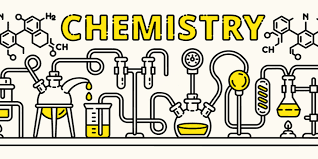This is the notes for liquid state.
Evaporation
The spontaneous escaping of molecules at any temperature from the liquid
surface to vapour state due to its higher kinetic energy then the
intermolecular force of attraction is called evaporation.
when kinetic energy of a molecule exceeds the banding intermolecular force
of attraction the molecule is escape s from the liquid surface.
- Evaporation is spontaneous or natural process.
- Evaporation is endothermic process. For example lakes dry up faster in hot
season than in winter season.
- Evaporation causes cooling. Evaporation molecules having high kinetic
energy scabs from the liquid surface which decrease the average kinetic
energy of the liquid system and cooling takes place.
- • Evaporation is surface phenomenon. In evaporation only those molecules
escape from the liquid which a more kinetic energy than cohesive energy.
Condensation Condensation is the cooling down of vapour into
liquid.
- It is a reverse process of evaporation.
- Decrease in temperature decreases the kinetic energy
of gas molecule and triggers for the condensation.
- Condensation of water vapour in the atmosphere lead
to rainfall resulting into the completion of water cycle.
Vapour pressure Vapour pressure of liquid is defined as the pressure exerted by the vapour of liquid
when rate of evaporation is equal to the rate of condensation at a given
temperature in a closed container.
On heating any liquid in a closed vessel, the rate of evaporation increases and the
number of molecule in vapour phase increases. Later on this molecule is start to
collide with each other then start condense into liquid within the container.
During these two opposite phenomena of evaporation and condensation or state
appears where the rate of evaporation is equal to rate of condensation. The
pressure created by the vapour at this stage is called vapour pressure.
Factors affecting the vapour pressure.
- Nature of liquid
- Temperature
- Presence of impurities
Boiling point of liquid The temperature at which vapour pressure of liquid becomes equal to the
atmospheric pressure is called boiling point.
Example: When water is heated upto 100°C at one atmospheric pressure the
vapour pressure of water becomes equal to the atmospheric pressure that is
why 100°C is the normal boiling point of water.
Difference between boiling and evaporation
Surface tension Surface tension of liquid is defined as the tangential force acting along the
surface of the liquid at right angle to a line of unit length drawn on the surface of
liquid.
The net force of attraction on the bulk molecule remains balance where is the
surface molecule experience net downward pull. This involved force on the surface
molecules for surface tension. SI unit is Nm-1 and in CGS dyne cm-1
.
Factors affecting surface tension
- Intermolecular force: Greater the intermolecular force of attraction greater
will be the bending among the molecules and more will be the surface
tension.
Intermolecular force of attraction: Water > Ethanol > Ether
Surface tension. : Water > Ethanol > Ether
- Temperature: Increase in temperature, increases the kinetic energy of the
liquid molecule and decreases the intermolecular forces of attraction. This
decreases the surface tension.
- Presence of a impurities: surface active reagent lower the surface tension
while bulk active reagent increase the surface tension.
- Pressure: increase in pressure on the surface of liquid slightly increases the
surface tension.
Cohesive forces and adhesive forcesThe intermolecular force of attraction which exists between the same
type of molecules is called cohesive force.
- Why does Mercury form spherical droplet?
The cohesive forces in Mercury atom are greater than other
molecules in contact. Due to profound cohesive force of attraction, the
mercury atom has greater affinity towards the same kind of molecules
and tend to have minimum surface area. This minimum surface are of
droplets is also related to surface tension which keeps the molecule more
contracting to impart minimum surface area which makes it more stable.
• The intermolecular force of attraction existing between different types
of molecules is called adhesive force. For example intermolecular forces
between the glass surface and liquid molecules.
Capillary rise
• When adhesive forces are greater than cohesive forces then the liquid rises
within the capillary tubes. This happens when a capillary tube is dipped into
water.
• On the other hand, if cohesive forces are greater than adhesive forces the liquid
within capillary falls. This happens when a capillary tube is dipped into Mercury.
Application of surface tension
• We use soaps and detergent Cleaning clothes.
• Capillary action i.e. rising of oil in the wick of a lamp.
• Flying insect can walk on water surface.
• A drop of falling liquid is always in spherical shape.
• Glass melt on heating and takes up rounded shape which has
minimum surface area.
• Small needle or thin plates such as shaving blade can float
on water if these are kept carefully on the surface of water
due to surface tension.
Viscosity
The internal resistance to the flow of liquid is called viscosity.
Or,
The viscosity of liquid may viscosityd as resistance produced by one
layer of liquid flowing over adjacent layer with different velocity.
Example:
Rate of flow: water >mustard oil > honey >glycerin
Order of intermolecular force: water < mustard oil < honey < glycerin
Order of viscosity: water < mustard oil < honey < glycerin
Derivation of viscosity
Application of viscosity
• It helps to choose a suitable lubricant for specific machine to
reduce friction and as shock absorber.
• The knowledge of coefficient of viscosity of organic liquid is
used to find their molecular weight
• The Knowledge of viscosity of blood helps to find the flow of
it through vessel whether it is laminar or turbulent.





Post a Comment